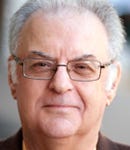2012 Hall of Fame: Sol Price2012 Hall of Fame: Sol Price
Sol Price pioneered the warehouse-club format and paved the way for discount retailers nationwide
December 3, 2012
Sol Price made his mark on retailing by lowering the selling price of goods.
It was Price who led the way for the founders of Target, Kmart and a guy named Sam down in Bentonville, Ark.
Price was the inventor of the warehouse club store.
In addition, he was among the first retailers to add an assortment of low-margin foods to a mix of low-margin general merchandise under the same roof; to see the potential for selling food in bulk sizes; and to offer on-site gas stations, in-store pharmacies and in-store optical departments.

Sol Price (Photo by James Skovmand/UT San Diego/ZUMApress.com)
For these reasons, Price — the founder of FedMart and later Price Club, which set the pattern for warehouse clubs like Costco, Sam’s Club and BJ’s — is being inducted into the SN Hall of Fame.
“Sol Price was one of the greatest merchants of the 20th century,” according to Jim Sinegal, the recently retired chairman of Costco Wholesale Corp., Issaquah, Wash., who first met Price in 1954.
Speaking at Price’s memorial service in 2009, Sinegal said, “I did not learn a lot [from Price] — I learned everything, everything I know. That was the impact he had on me.”
Read more: The SN Hall of Fame, Class of 2012
 Speaking on another occasion, Sinegal said, “He motivated us to do our very best — not just because he had a formidable presence, but [because] we really did not want to let him down. We idolized the guy. We thought about him on a continual basis. What would he do? How would he handle a situation? And it influenced our lives.”
Speaking on another occasion, Sinegal said, “He motivated us to do our very best — not just because he had a formidable presence, but [because] we really did not want to let him down. We idolized the guy. We thought about him on a continual basis. What would he do? How would he handle a situation? And it influenced our lives.”
Speaking of his father, Robert Price was quoted as saying, “Sol Price was the epitome of intelligent planning, innovation and a willingness to take risks. While he cared about giving a good return to shareholders, Sol cared deeply about the people he was serving — he genuinely hoped he could make their lives better.”
Seizing Opportunity
Sol Price was born in 1916, the son of Russian immigrants whose name was changed from either Preuss or Press to Price when they passed through Ellis Island — a happy coincidence once Price gave up practicing law at age 38 to enter the retail business.
Describing his approach to business in a 2003 interview with Fortune Magazine, Price said business broke down into three categories — personnel, product and facilities — “and the same six rules applied to them all: having the right kind in the right place at the right time in the right quantity in the right condition at the right price.”
Always a strong defender of the rights of the underprivileged in his law practice, the motivating factor in Price’s retail concepts involved getting around fair-trade laws, which gave manufacturers the right to set and enforce minimum selling prices.
“We called it ‘getting under the umbrella,’” Price told Fortune. “After World War II there was tremendous demand, and manufacturers pretty much controlled pricing. So there was an opportunity — with the price up here, the question is, can we get under it?
“Well, we could because conventional merchandising was set up with very high margins to cover advertising, credit cards, the enormous selection, the delivery costs. We focused on bare bones — limited hours, limited selection, faster turnover.”
Price’s pricing approach was to start with the cost of a product and mark it up as little as possible so the gross margin covered the selling cost and left a small profit.
He also refused to stock any fair-trade items.
He and a group of investors opened their first business, called FedMart, in San Diego on Dec. 3, 1954, after visiting a Fedco membership department store in Los Angeles — a nonfood discount store open only to federal employees.
The first FedMart was located in an empty warehouse — owned by Price’s mother-in-law — in a secondary real estate location. “Fortunately most of us had backgrounds that were alien to retailing,” Price said years later. “We didn’t know what wouldn’t work or what we couldn’t do.”
The initial investment — in fixtures, equipment, inventory and other start-up costs — was $50,000. “When we didn’t know what we were doing, it only took $50,000 to start a business,” Price once said. “Five years later, when we were really experienced at running FedMart, it took $5 million to open.”
Read more: 2012 Hall of Fame: David Dillon
FedMart was originally open only to federal workers, veterans and their families for a lifetime membership fee of $2. It eliminated that requirement and opened to the public in general in 1963.
Stores stayed open till 9 p.m., at a time when most businesses closed at 6 p.m.; most products except jewelry were sold self-service, and selections — all nonfoods originally — were limited to two or three varieties.
“We had anticipated we might do $1 million the first year,” Price said, “but it ended up approximately three times more than we expected. It was the hottest thing to hit San Diego in a long time.”
As the business grew, Price gave up his law practice to spend full time running the company.
Discount Groceries
One of FedMart’s early innovations was selling groceries. The first food items it stocked were cans of Planters peanuts — initially buying them by the case but ultimately by the truckload, with product displayed all over the store. That evolved into a complete food department, including fresh meat and produce.
FedMart also pioneered large consumer package sizes, starting with washing detergent and liquid bleach. It was also instrumental in selling prescription drugs at low prices — a policy eventually adopted by local drug stores.
Price said he never allowed employees to use the word “discount” to describe his business model. “The whole philosophy was, how do we sell stuff at the lowest markup rather than the deepest discount?” he told Fortune.
When rival retailers sought to challenge FedMart on some of the low prices it featured, Price decided the company had to be “super careful about what we did. The company never used a superlative in the printed material. It did not use comparative pricing. FedMart’s whole approach to the way we marketed to people was totally different than the conventional approach.
“We tried to look at everything from the standpoint of, is it really being honest with the customer? If you recognize you’re really a fiduciary for the customer, you shouldn’t make too much money.
“[We] had a duty to be very, very honest and fair with [members] and so we avoided sales and advertising. We said in effect the best advertising is by our members — the unsolicited testimonial of the satisfied customer.”
Price also cared about his employees. Writing in an employee bulletin, Price said: “You must feel confident that you are working for a fine and honest company. Somehow we must make this mean to each of you that you will be permitted, encouraged and sometimes even harassed into growing with the company to the limit of your ability.
“We believe you should be paid the best wages in your community for the job you perform. We believe you should be provided with an opportunity to invest in the company so that you can prosper when it prospers.
“We believe you should be encouraged to express yourself freely and without fear of recrimination or retaliation. We believe you should be happy with your work so your occupation becomes a source of satisfaction as well as a means of livelihood.”
Read more: 2012 Hall of Fame: Clarence Birdseye
Price expanded FedMart from California to Arizona, New Mexico and Texas. When FedMart opened a store in San Antonio in 1957, it ran up against local segregation laws that required separate snack bar seating for African Americans. Price’s solution was to eliminate seating in the snack bar altogether, enabling customers to be served equally.
According to Sinegal, Price conducted his business with honor. He once persuaded a hosiery supplier to cut his price based on expectations of high volumes, and when sales did not reach those levels, Price paid the wholesaler the difference, Sinegal recalled.
In the Fortune interview Price recalled a visit he once had from Sam Walton. “He spent all this time telling me how impressed he’s been with FedMart and how he’d never have all these Wal-Marts and be worth $700 million without that model. ‘I owe it all to you,’ he said. I told him, ‘Then don’t you think I’m entitled to a finder’s fee?’”
Price Club Debuts
In 1975 FedMart had 40 stores across the Southwest with sales of $350 million. Price sold control of the company to Hugo Mann, a German company, which fired him at the end of the year. (FedMart went out of business in 1983.)
Price developed a new business from scratch almost immediately — opening the first Price Club membership warehouse store in mid-1976 in San Diego.
As with the original FedMart concept, the company kept prices low by operating out of concrete warehouses in secondary locations with limited hours and limited merchandise, though all of it was top quality and bought in bulk so that retail prices could be kept low.

Sol Price founded Price Club after pioneering the discount format with FedMart.
The first location was in a 100,000-square-foot warehouse located in a former aircraft hangar in an industrial area of San Diego. As the company expanded, it sought out other secondary real-estate locations — with concrete floors and high ceilings and steel racks four levels high offering large pack sizes in a no-frills atmosphere.
“We never advertised sales,” Price explained years later. “We just always tried to carry honest merchandise at an honest price. I’ve always felt we had an obligation to our members to get them the best goods at the best price and not try to take an extra nickel out of them.”
For years Price Club refused to accept credit cards — because Price did not like the idea of seeing his customers go into debt, observers said.
By 1993 the company had grown to 100 locations doing $8 billion in sales. That’s when Price opted to merge his company with Costco, the membership chain that was founded in the Pacific Northwest in 1983 by Sinegal and other former Price Co. employees.
Read more: The SN Hall of Fame, Class of 2012
Asked why he decided to merge with Costco — after turning down offers years earlier about combining Price Club with Sam’s Club — Price told Fortune, “We were good at innovating, but when it came to expanding, we weren’t so good.”
In 1996 Price launched PriceSmart, a smaller warehouse club chain operating in Central America and the Caribbean.
Asked by Fortune in 2003 if he was surprised discounters had become so big, Price replied, “I always felt department stores and conventional retailers were doomed. They lived and died trying to take advantage of customers, and they were inefficient.
“The more I studied it, the more it seemed the cost of getting goods to consumers was way too high. I’m surprised the department store has survived this long.”
Price died Dec. 14, 2009, at the age of 93.
About the Author
You May Also Like







.webp?width=300&auto=webp&quality=80&disable=upscale)
